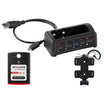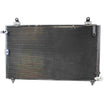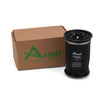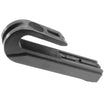
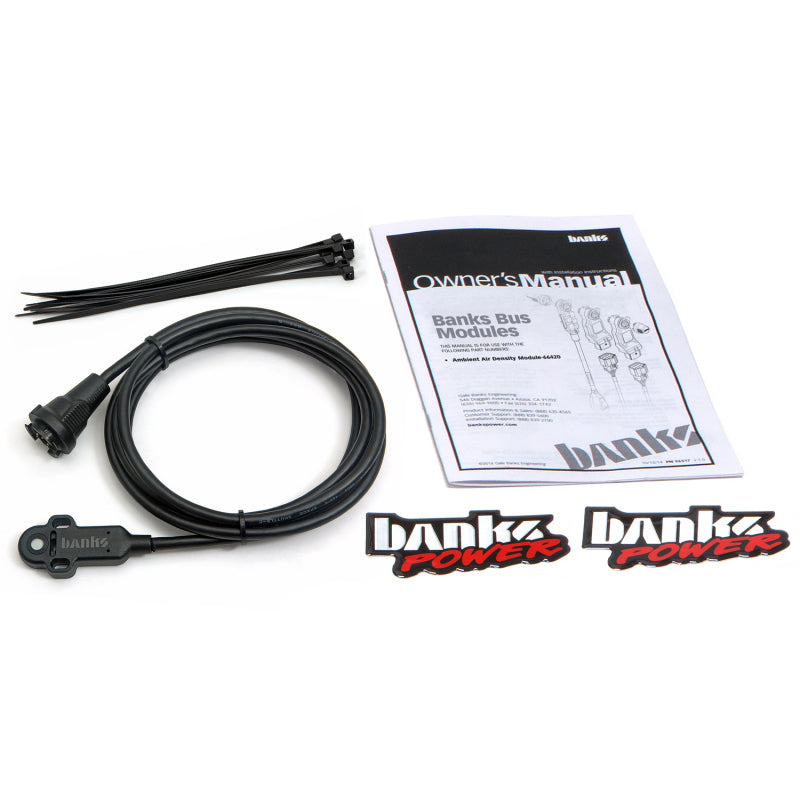

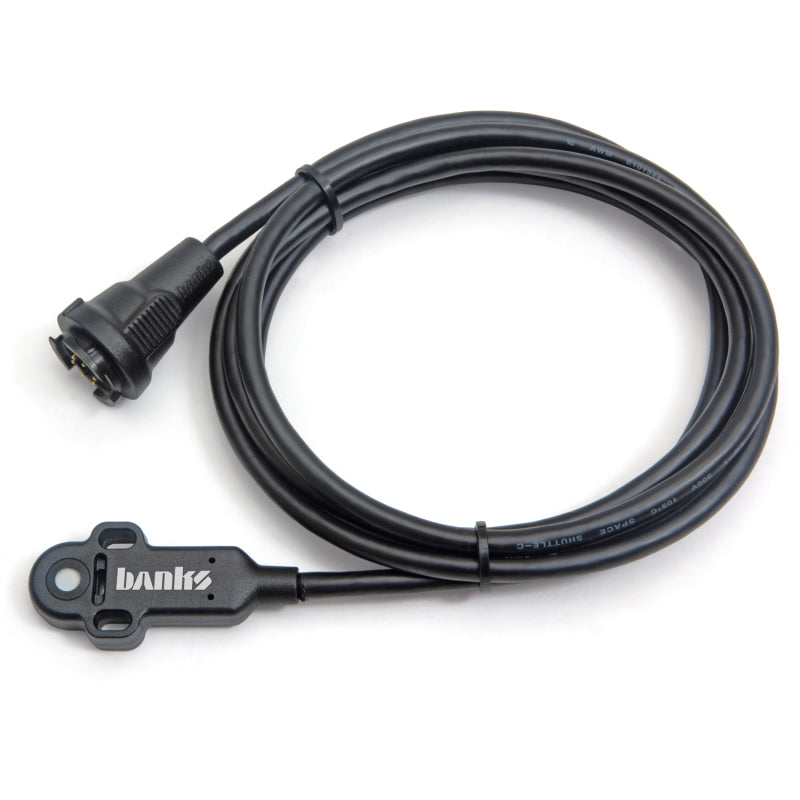

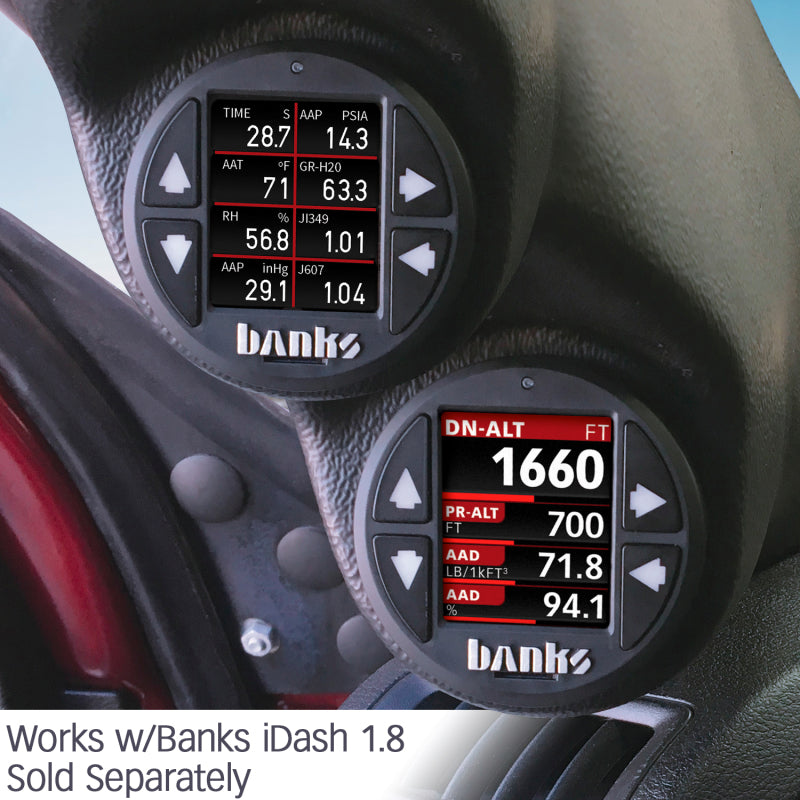
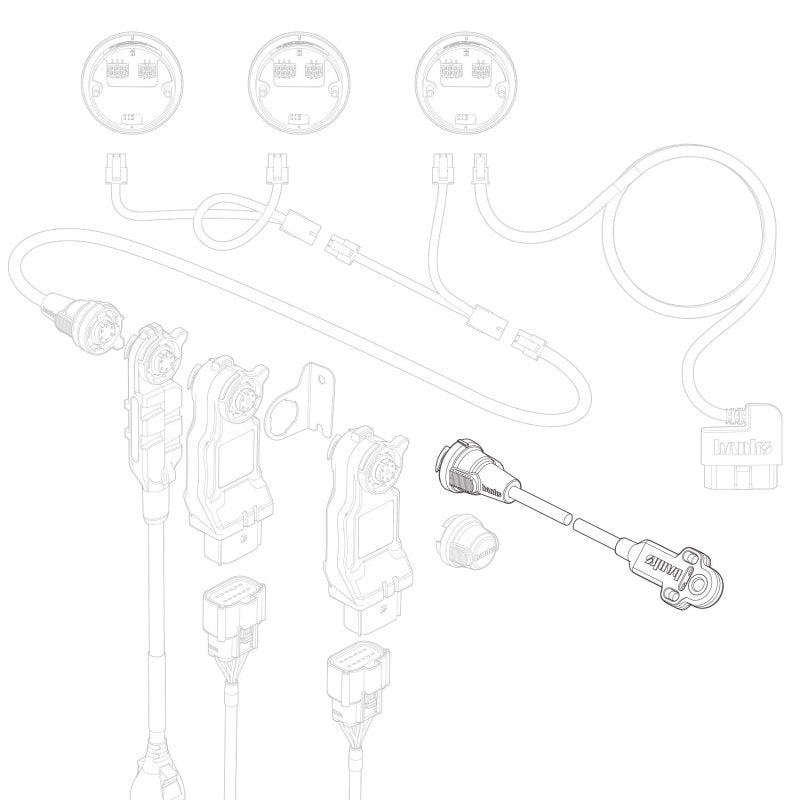

Banks Power AirMouse Ambient Air Density Sensor Module for iDash 1.8 S

The new AirMouse Ambient Air Density sensor module measures the power potential of air entering all naturally aspirated, turbo, and supercharged engines. The mouse shaped sensor is a rugged military-grade weather station with scientific accuracy. The waterproof module utilizes a Gortex® vent to allow for precise measurement of pressure, temperature, and humidity while protecting the electronics inside. The compact sensor module mounts in the vehicle’s grill or air intake to constantly monitor the characteristics of the available air, which directly impacts engine performance.
The AirMouse sends lightning-fast data over the Banks Bus Network to the iDash 1.8 for monitoring and data logging.
The module adds 15 new parameters to the already impressive iDash 1.8 giving professional racers and performance enthusiasts the ability to view, data log, monitor min/max values, and set custom alerts for all AirMouse data.
- Ambient Air Density Mass (lb of air per 1000 cubic feet) – The mass of dry air per unit volume of air measured at the location of the sensor. Density is a direct measurement of the oxygen available in the air for combustion and is calculated from the air’s temperature, pressure, and humidity. The parameter is divided by 1000 to make the scaling easier to work with. (ex: 76.4 lb/1kft^3 = 0.0765 lb/ft^3)
- Ambient Air Density % of Standard Day – Ambient Air Density divided by a standard (either J607 or J1349) to normalize Density Mass to 100% for easier analysis.
- SAE J607 Correction Factor – Dyno correction factor to correct HP at varying altitudes and ambient temperature and humidity to a standard (J607 Standard: AAP = 14.7 psia, AAT = 60 F, RH = 0%, AAD = 76.35 lb/1kft^3).
- SAE J1349 Correction Factor – Dyno correction factor to correct HP at varying altitudes, ambient temperature and humidity to a standard (J1349 Standard: AAP = 14.35 psia, AAT = 77 F, RH = 0%, AAD = 72.17 lb/1kft^3)
- Ambient Air Pressure (psia) – The pressure of the air at the sensor reported in pounds per square inch absolute.
- Ambient Air Pressure (kpa) – The pressure of the air at the sensor reported in Kilo Pascal absolute.
- Ambient Air Pressure (in Hg) – The pressure of the air at the sensor reported in inches of Mercury.
- Ambient Air Temperature (F) – The temperature of the air at the sensor reported in deg Fahrenheit.
- Ambient Air Temperature (R) – The temperature of the air at the sensor reported in deg Rankine.
- Ambient Air Temperature (C) – The temperature of the air at the sensor reported in deg Celsius.
- Ambient Air Temperature (K) – The temperature of the air at the sensor reported in deg Kelvin.
- Relative Humidity (%) – The amount of water vapor present in air expressed as a percentage of the amount needed for saturation at the same temperature.
- Grains H2O (grain/lb air) – A measurement of absolute humidity. The mass of water vapor in the air per lb of dry air. 7000 grains of H20 is equal to 1 lb of water.
- Density Altitude (ft) – The density altitude is the altitude relative to standard atmospheric conditions at which the air density would be equal to the indicated air density at the place of observation. In other words, the density altitude is the air density given as a height above mean sea level.
- Pressure Altitude (ft) – Pressure altitude is defined as the altitude above or below the standard 29.92″ Hg standard datum plane. On a standard day, the pressure at sea level would be 14.7 psia (29.92″ hg). For every 1000′ of altitude, there is an increase or decrease of about 0.5 psia (1” hg).
- Dew Point (F) – The atmospheric temperature (varying according to pressure and humidity) below which water droplets begin to condense and dew can form.












